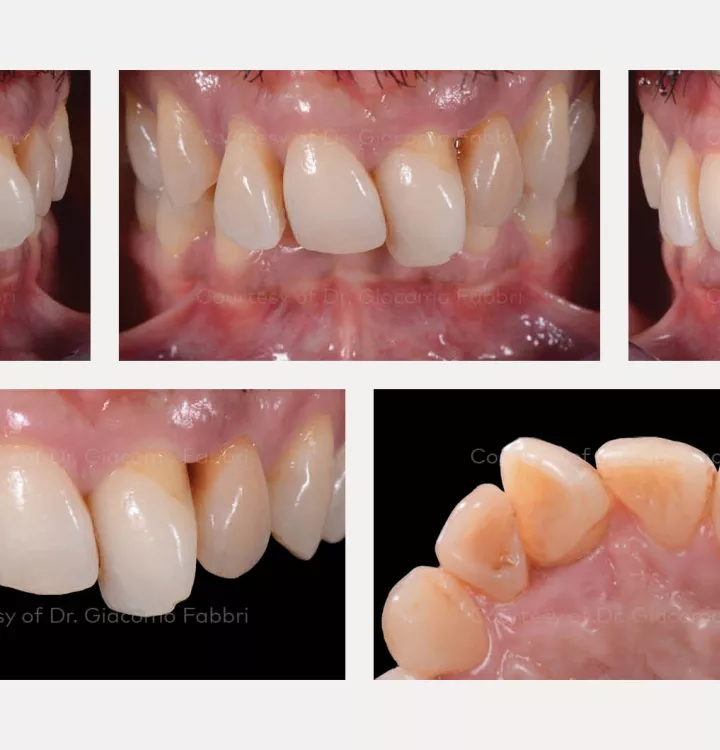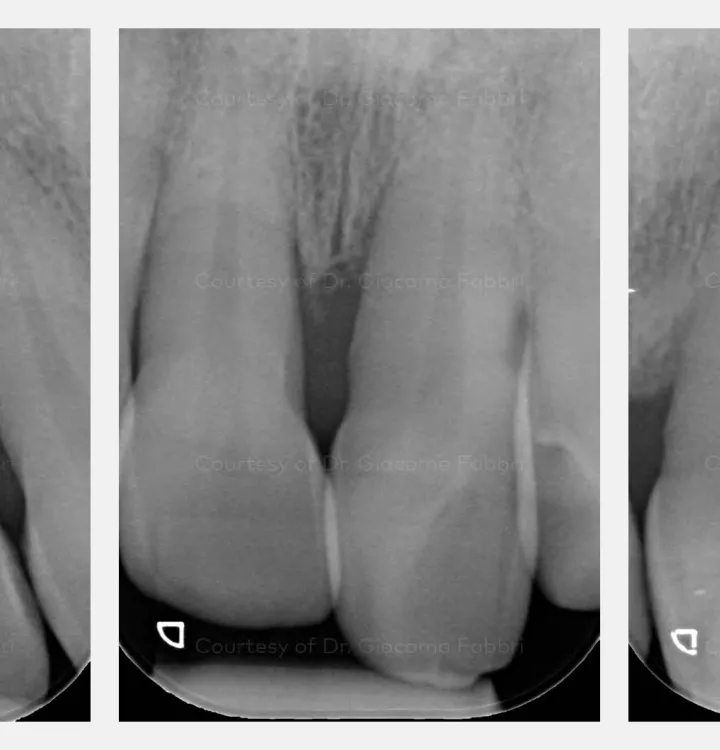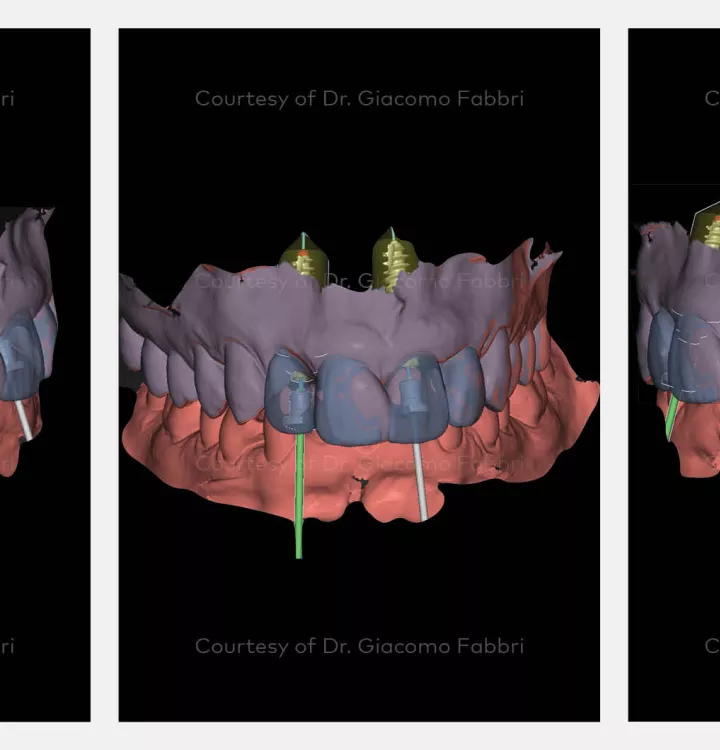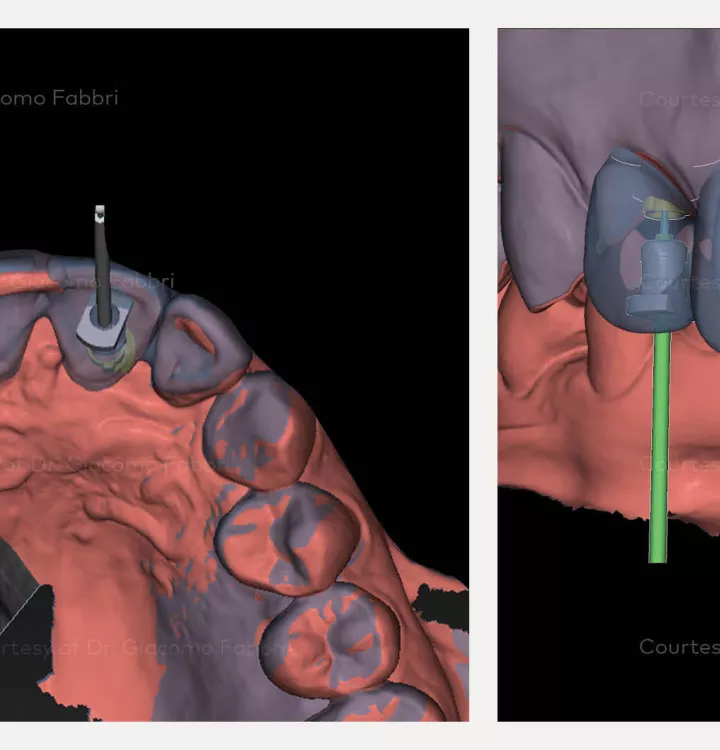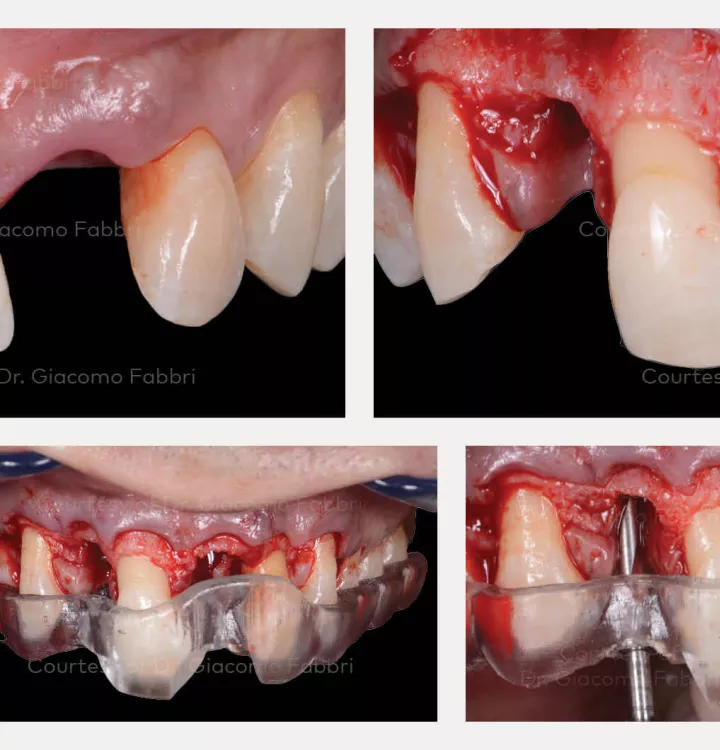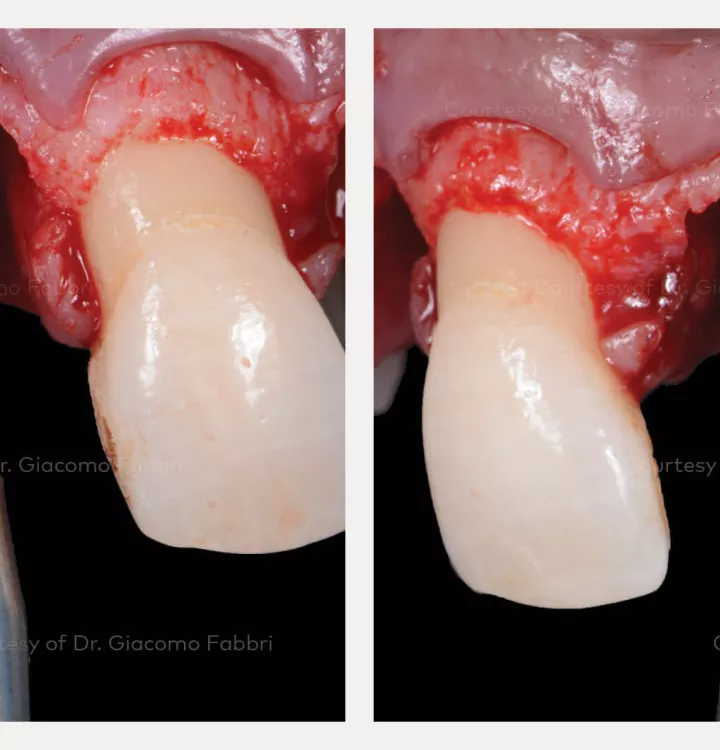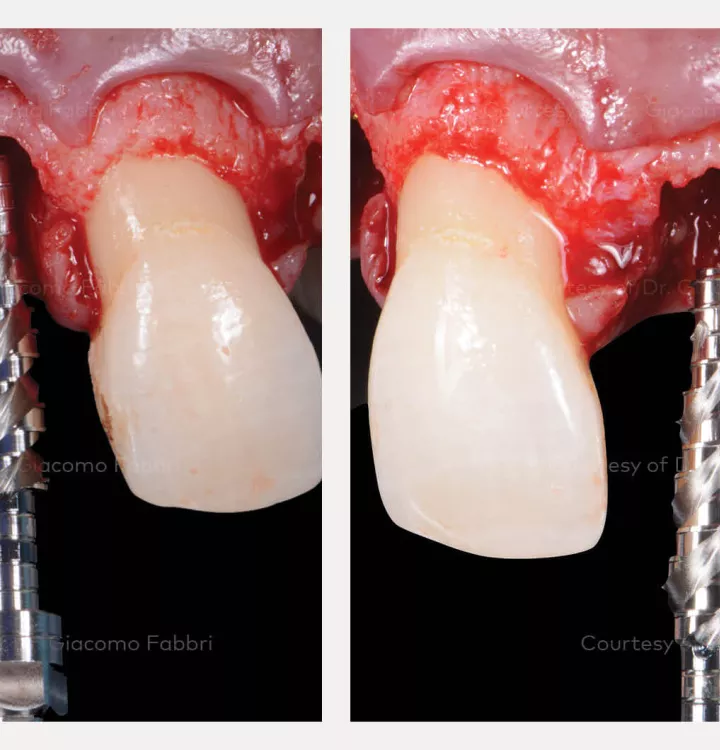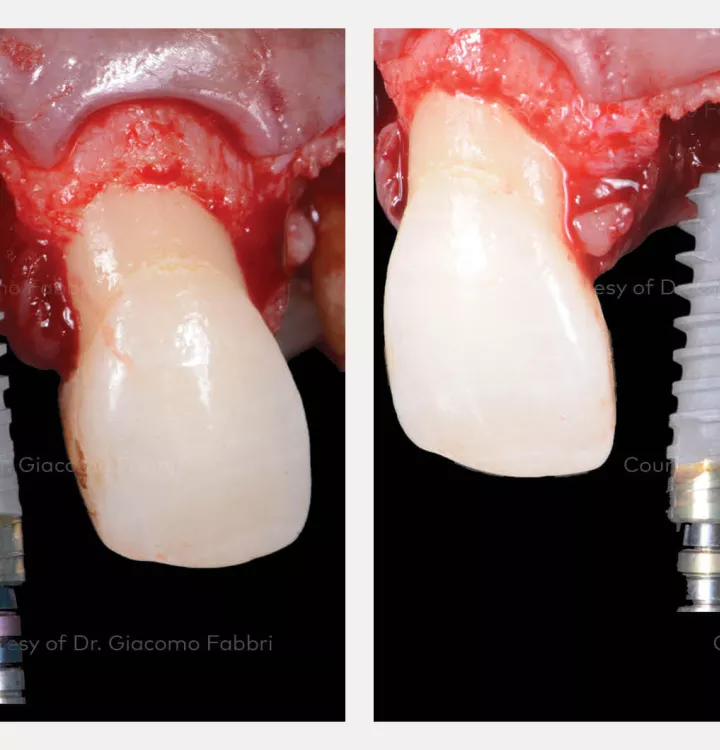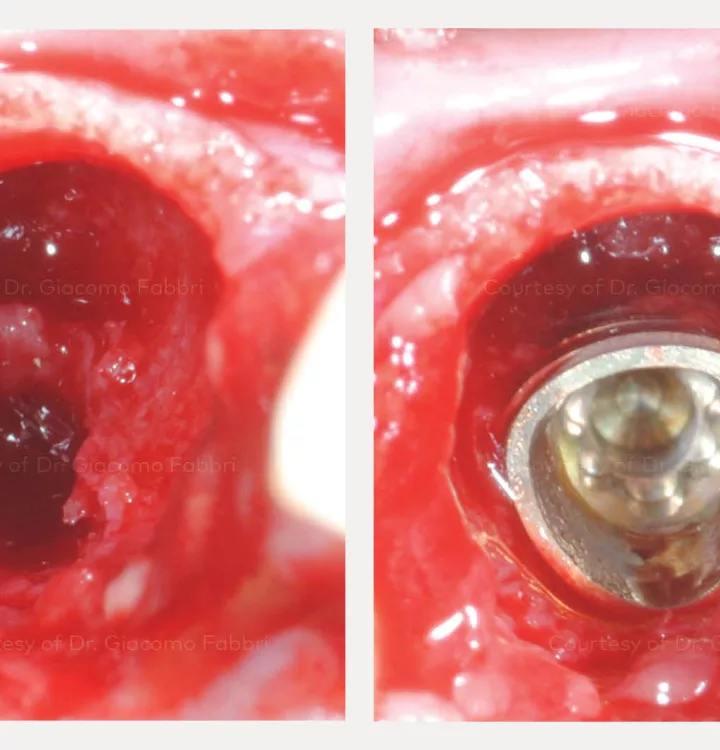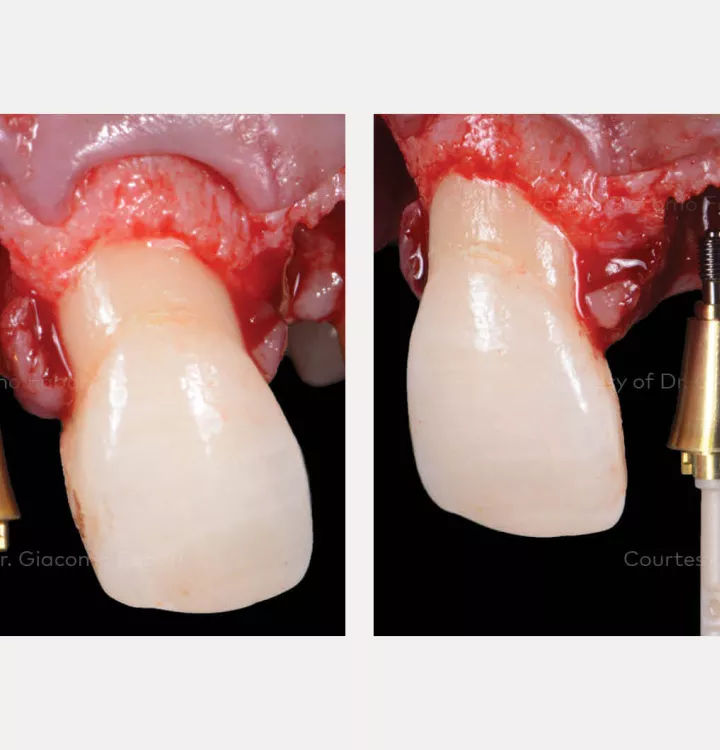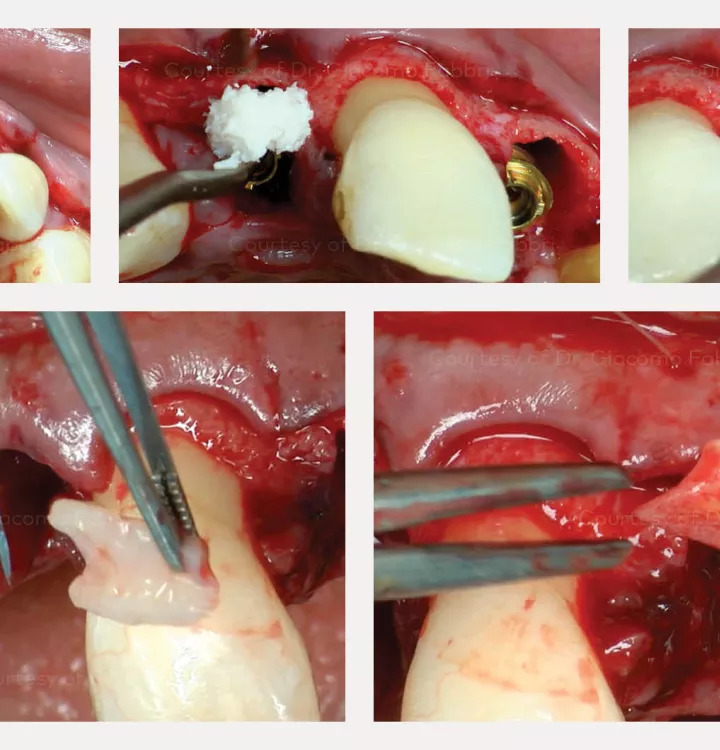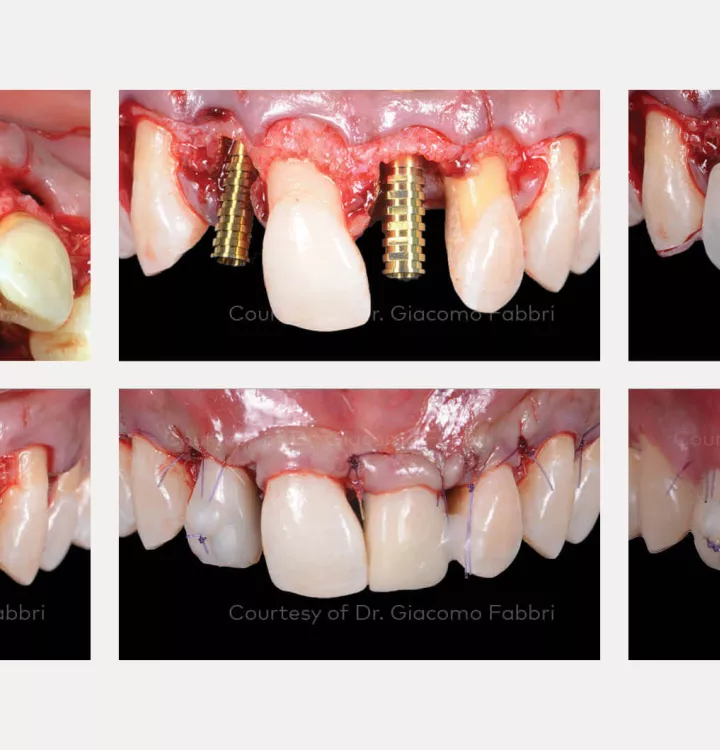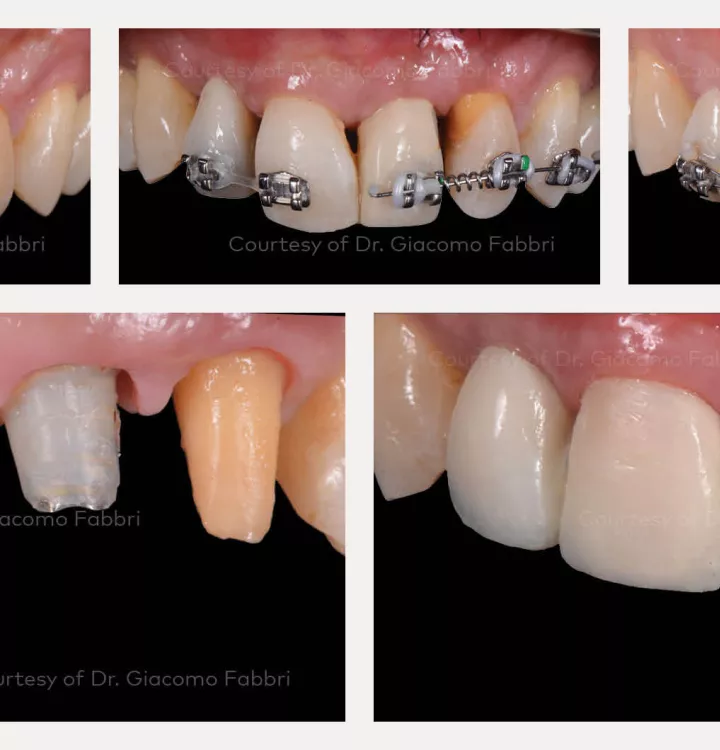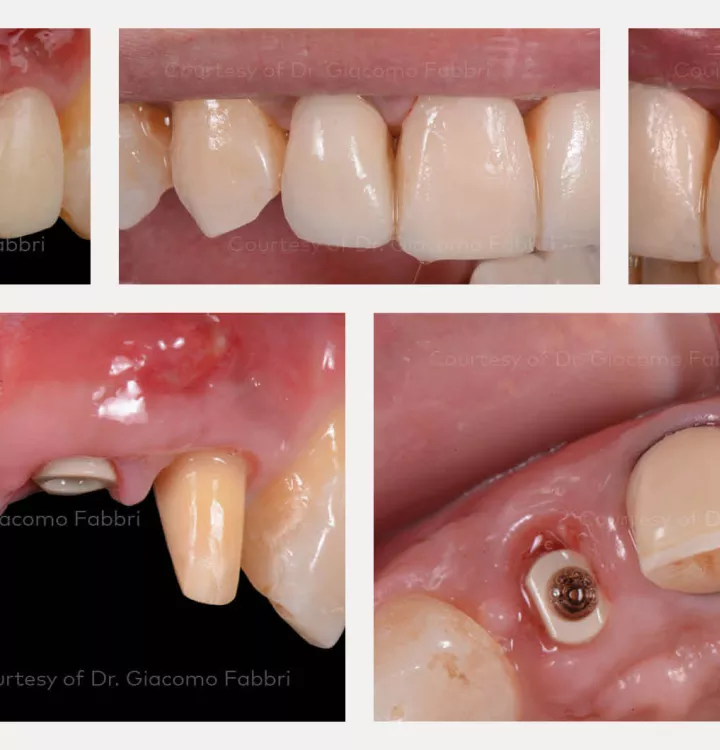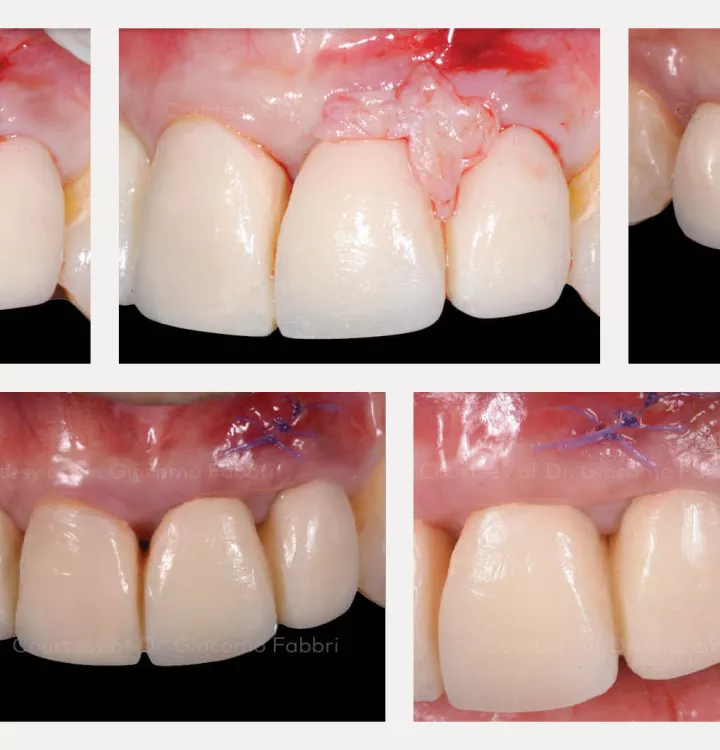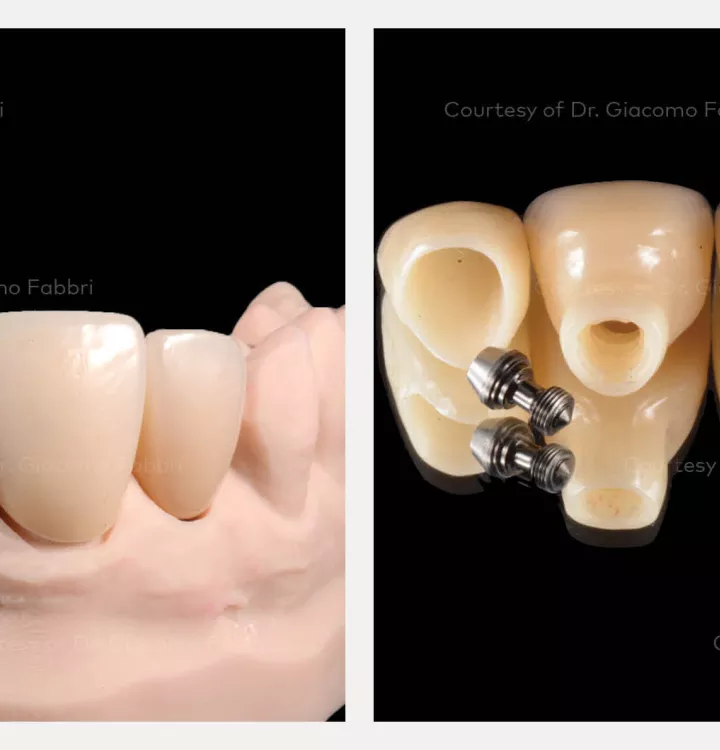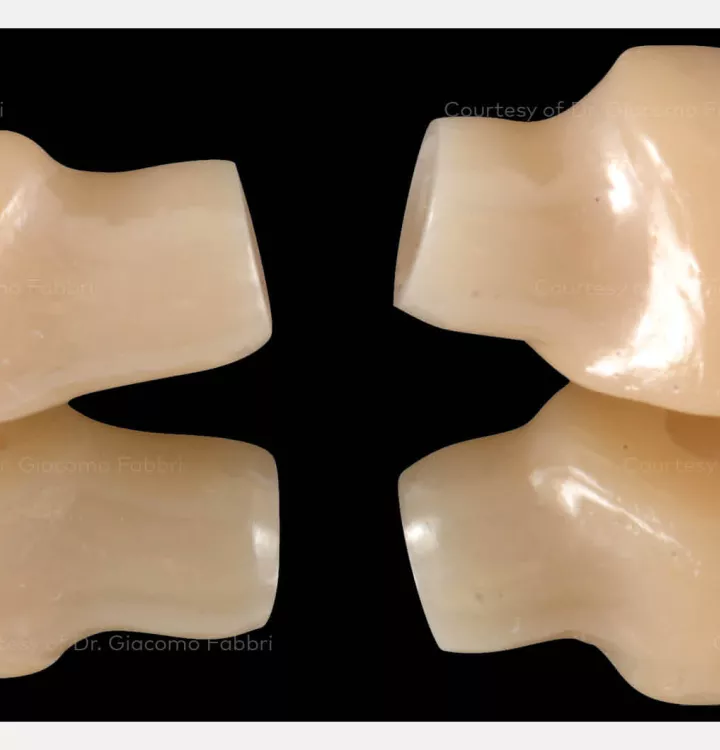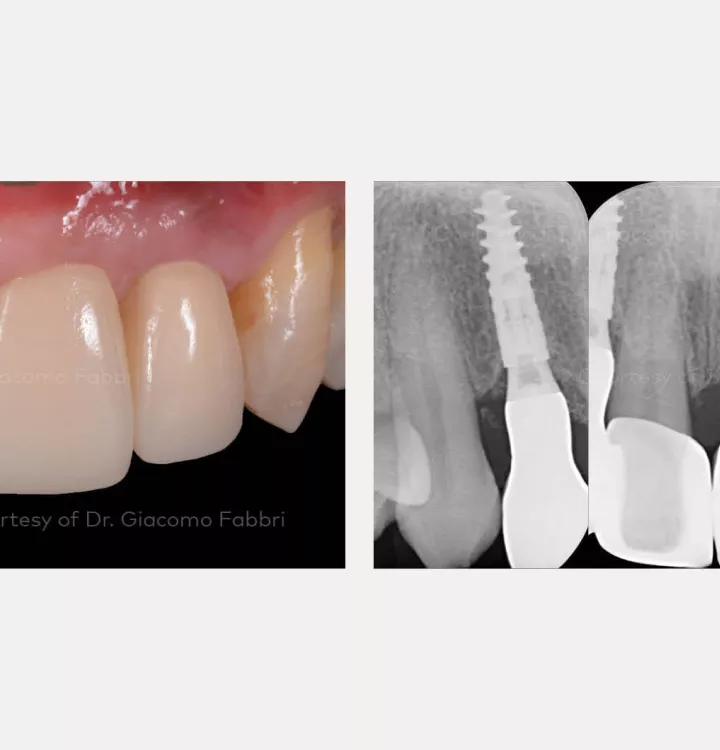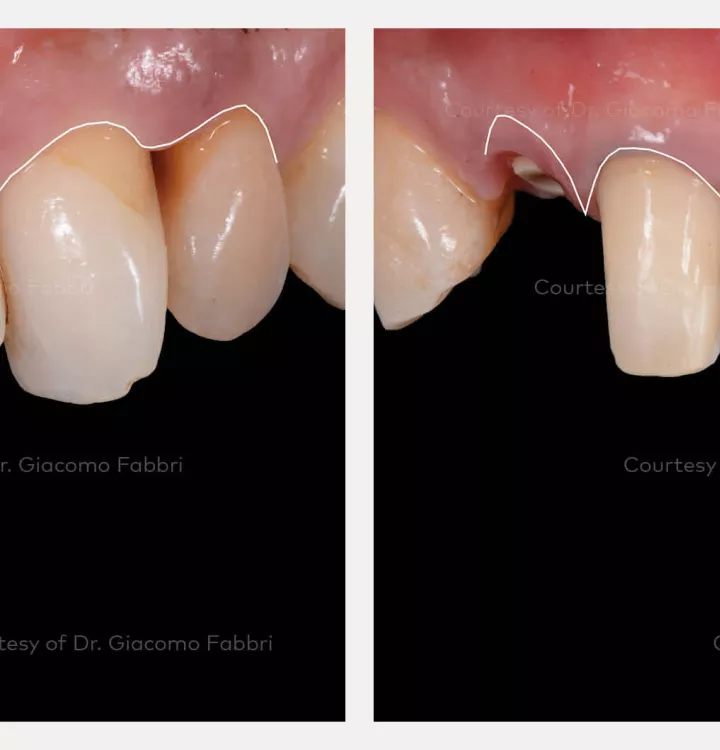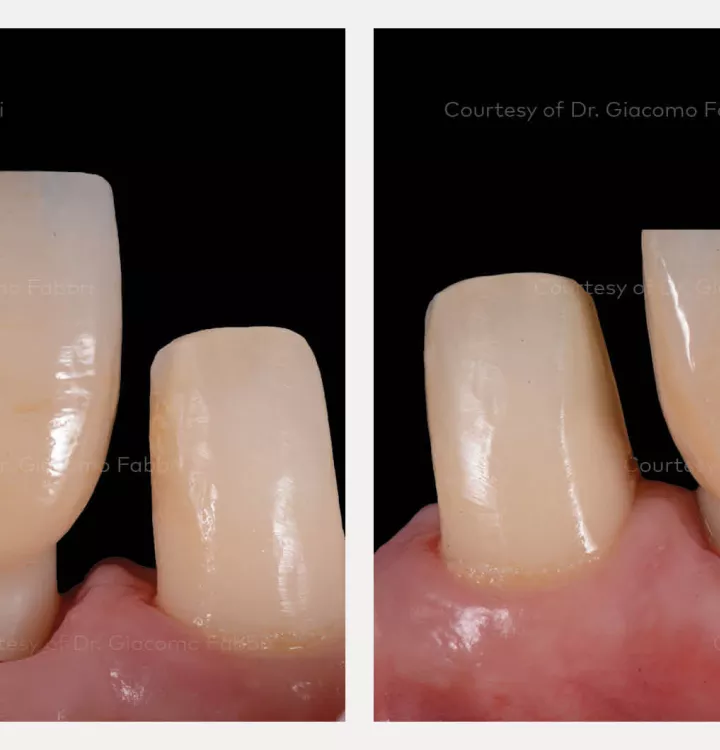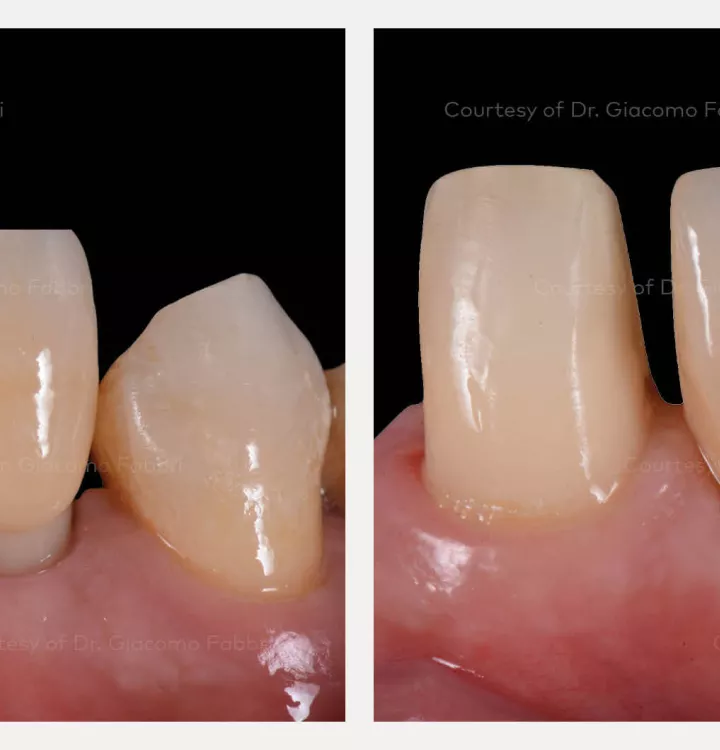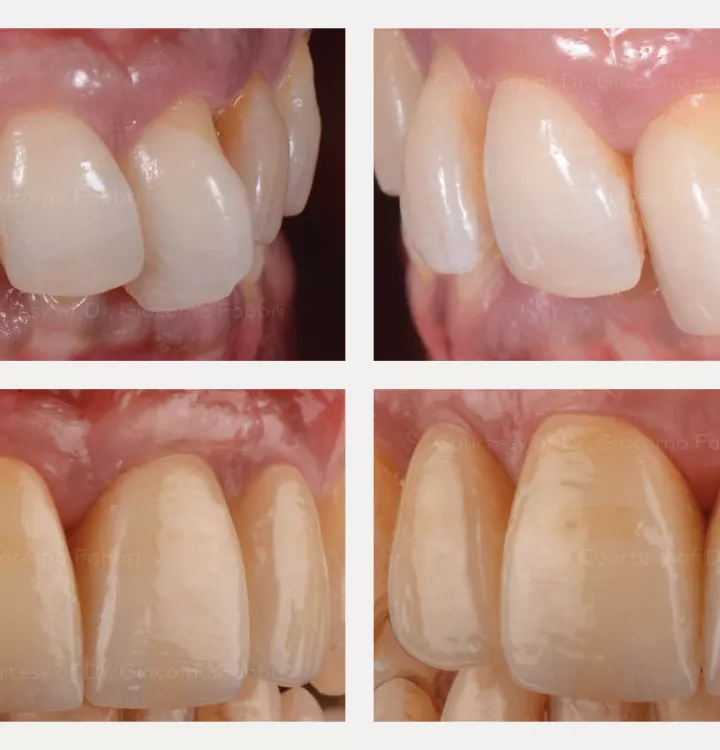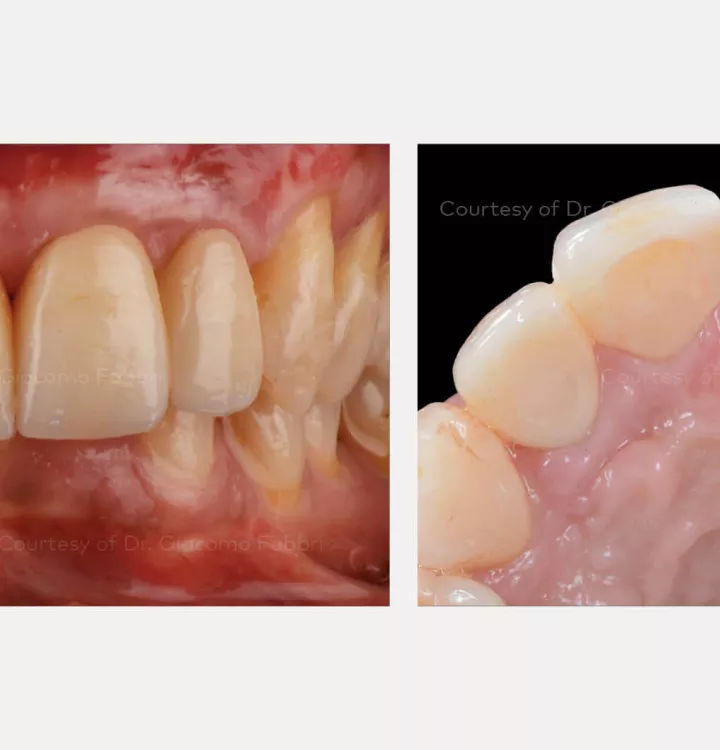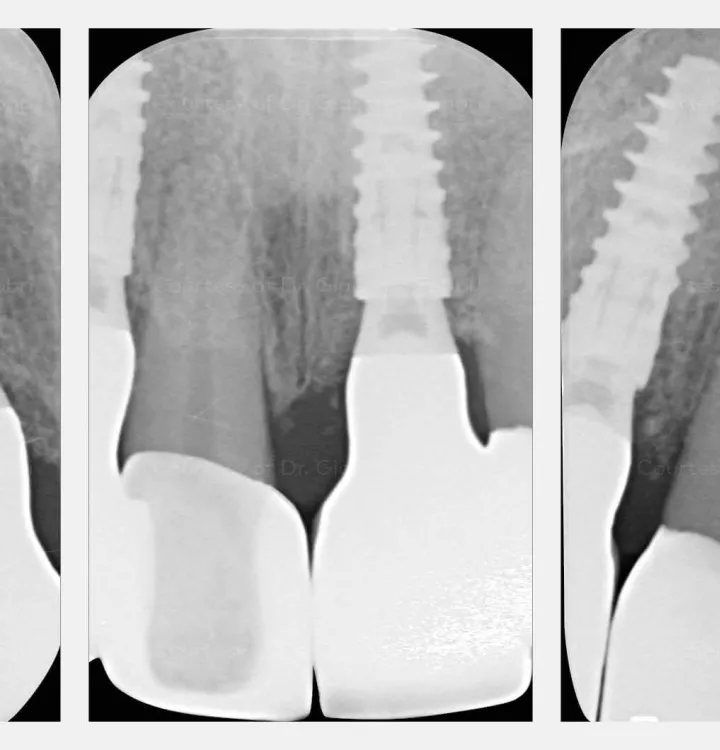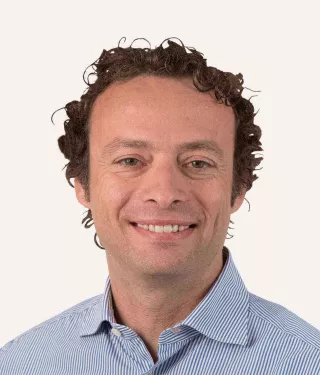
Challenging anterior multidisciplinary rehabilitation using Nobel Biocare N1™ implant system
Dr. Giacomo Fabbri
Italy
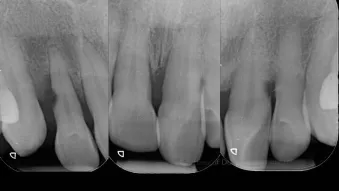
Patient: Male, 44 years old
Clinical situation: Good systemic and oral health condition, light smoker with history of periodontal disease. He requires a restorative esthetic treatment of the upper anterior teeth. All the natural teeth in the posterior areas are healthy and they don‘t need any therapy. They provide a good occlusal support and function.
Surgical solution: Extraction of #7 and #9 with immediate placement of the N1 Implant, immediate loading and connective tissue graft. Orthodontic therapy finalized to correct the position of tooth #8 and #10.
Restorative solution: Final restoration with all-ceramic restorations on teeth #8 and 10 as well as 2 screw-retained crowns on implants in sites #7 and #9.
Surgery date: March 20, 2021
Total treatment time: 14 months
Tooth position: #7, 8, 9, 10
-
 creos™ xenogain
creos™ xenogain3 methods of application to meet all your bone grafting needs.
-
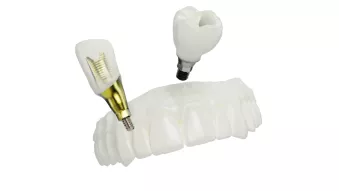 Custom dental prosthetics for clinicians
Custom dental prosthetics for cliniciansDiscover a broad range of individualized dental prosthetics, that have been developed with you and your patients in mind.
Sign up for our blog update
Get the latest clinical cases, industry news, product information and more.
© Nobel Biocare USA, LLC, 2023. All rights reserved. Nobel Biocare, the Nobel Biocare logotype and all other trademarks are, if nothing else is stated or is evident from the context in a certain case, trademarks of Nobel Biocare. Please refer to nobelbiocare.com/trademarks for more information. Product images are not necessarily to scale. Disclaimer: Some products may not be regulatory cleared/released for sale in all markets. Please contact the local Nobel Biocare sales office for current product assortment and availability. For prescription use only. Caution: Federal (United States) law restricts this device to sale by or on the order of a licensed clinician, medical professional or physician. See Instructions For Use for full prescribing information, including indications, contraindications, warnings and precautions. Nobel Biocare does not take any liability for any injury or damage to any person or property arising from the use of this clinical case. This clinical case is not intended to recommend any measures, techniques, procedures or products, or give advice, and is not a substitute for medical training or your own clinical judgement as a healthcare professional. Viewers should never disregard professional medical advice or delay seeking medical treatment because of something they have seen in this clinical case. Full procedure is not shown. Certain sequences have been cut. Dr. Giacomo Fabbri is a paid consultant for Nobel Biocare. The opinions expressed are those of the doctor. Nobel Biocare is a medical device manufacturer and does not dispense medical advice. Clinicians should use their own professional judgment in treating their patients. Individual patient results may vary.
